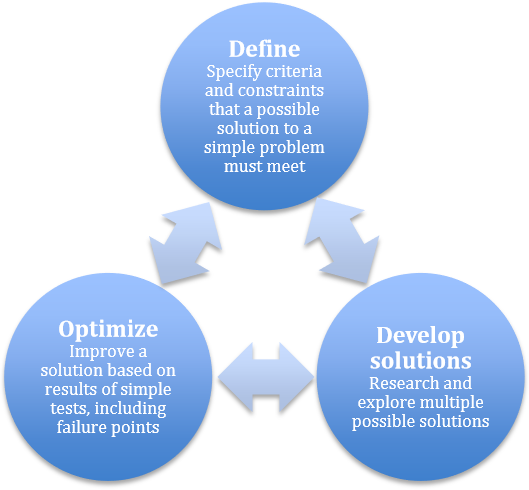
The ISTE Standards for Coaches 4d, “Model the use of instructional design principles with educators to create effective digital learning environments,” brings the conversation back to a key facet of coaching, which is to model for teachers. Modeling as a learning designer means identifying models to share with educators, talking them through model approaches when it comes to instructional design principles and digital learning environments, and then also being that model for educators through professional learning facilitation, coaching interactions, and in the classroom.

Source: How to Approach Iterating Ed. Tech Professional Learning
Evidence: “Understanding by Design focuses us as educators on working backward in our design of educational approaches and experiences by beginning with the end in mind. In the classroom, this applies to lesson and unit planning. With regard to professional learning, student learning is the end goal. Answering the question up above means starting with identifying as best we can what is meant by “high-impact teaching and learning.” Appropriately, Understanding By Design also advocates for the use of the Essential Question in terms of guiding work. So let’s work backward by design to address the essential question proposed above.”
Explanation: Understanding by Design models general instructional design principles that apply to creating effective digital learning environments and modeling how to approach Understanding by Design empowers educators to be successful in this area.

Source: Teaching by Design, Part Deux
Evidence: “With the established idea that sound pedagogy still fundamentally drives instruction when technology is involved, finding resources to support the pedagogically appropriate use of instructional technology can be challenging. Researched-based approaches where the application is proven provide the best opportunity for successful classroom applications. One such book, “The Distance Learning Playbook” by Fisher, Frey, and Hattie, provides plenty of research-based support for careful technology integration. They speak to concerns where “too much talk has focused on teaching and not on learning” by offering that “teachers should not hold an instructional strategy in higher esteem than their student’s learning.” In support of this, they offer suggestions for instructional strategies that can be effectively integrated with technology such as Classroom Discussion with an effect size of 0.82, Jigsaw lesson organizational strategies with an effect size of 1.2, Reciprocal Teaching with an effect size of 0.74, and more. Liz Kolb takes a very research-based focus in her book “Learning First, Technology Second”. As the book title might suggest, she offers that “Teaching with technology is about the learning first and the tool second,” and advises educators to “Focus specifically on how the technology is meeting the needs of the learner.” Based on her research, Kolb offers her “Triple E Framework” as a means to helping educators accomplish effective integration of instructional technology through the lens of “Engagement, Enhancement, and Extension.” One last example of research-based instructional ideas around technology integration is “Using Technology with Classroom Instruction that Works” by Pitler, Hubbell, Kuhn, and Malenoski which applies the meta-research from Dr. Robert Marzano’s book “Classroom Instruction that Works” to instructional technology. While many of the specific technology examples are dated, the core research-based concepts are sound, insightful, and proven. The research-based reasons for careful planning around thoughtful instruction also remain the same, “Research indicates that technology’s use in the classroom can have an additional positive influence on student learning when the learning goals are clearly articulated prior to the technology’s use (Ringstaff & Kelley, 2002; Schacter, 1999).””
Explanation: Modeling how to approach instructional resources support educators when it comes to designing effective digital learning environments, and “The Distance Learning Playbook”, “Learning First, Technology Second”, and “Using Technology with Classroom Instruction that Works” all model use of instructional design principles with respect to effective digital learning.

Evidence: “When the peer coach assumes the role of facilitator, this means “Planning and leading meetings, activities, and staff development in one-on-one, small group, or large group situations,” (Foltos, 2018). Regardless of the size of facilitation, the coach needs to be prepared to model risk taking, “Other Peer Coaches model risk taking and recognize that taking risks may occasionally mean failure” (Foltos, 2013). This helps lay the foundation of safety that’ll be needed for collaboration later on. This is also a key communication strategy that the peer coach can reference later on when trying to navigate the tricky terrain of providing constructive peer feedback. As described by famed communicator Dale Carnegie in his book How to Win Friends & Influence People, “Talk about your own mistakes before criticizing the other person.””
Explanation: Modeling risk taking as a coach helps ease teacher fears about the vulnerability involved with designing digital learning environments and allows the coach to better model innovative instructional design principles.
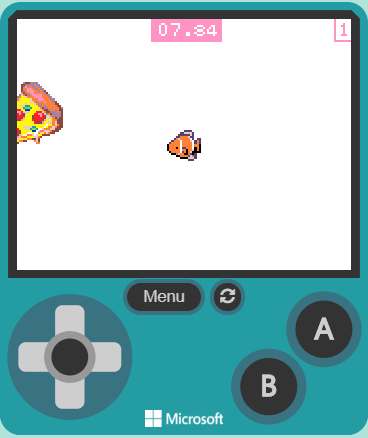
Source: Gaming the Educational System
Evidence: “Innovation, by definition, means doing something new, unique, and different in order to more effectively and or efficiently accomplish a task, goal, and/or objective. In this case, improving upon the traditional educational experience in such a way that students are more engaged, remember more content, and learn more standards-based material overall. If they have fun along the way then all the better! Piaget is often quoted as saying that “Play is the work of childhood” so if we can tap into this in the classroom then we can create a naturally more effective means for learning in the classroom. Game-based learning and gamification tap into play and utilize this as a means to facilitate learning, thereby tapping into how children are naturally wired to learn. Even simple multiplication games are start toward helping increase engagement and any number of game-focused approaches can help make all content areas more interesting for students. Even gamification of classroom management can help make the generic class experience more fun for students. All of these approaches can be analog or digital in terms of the game-based approach. Digital, or video, games do provide some additional opportunities that weren’t readily available even just a few years ago.”
Explanation: Understanding research and history behind more modern approaches to instructional design with regard to digital learning environments allows educators to be more innovative in their efforts.
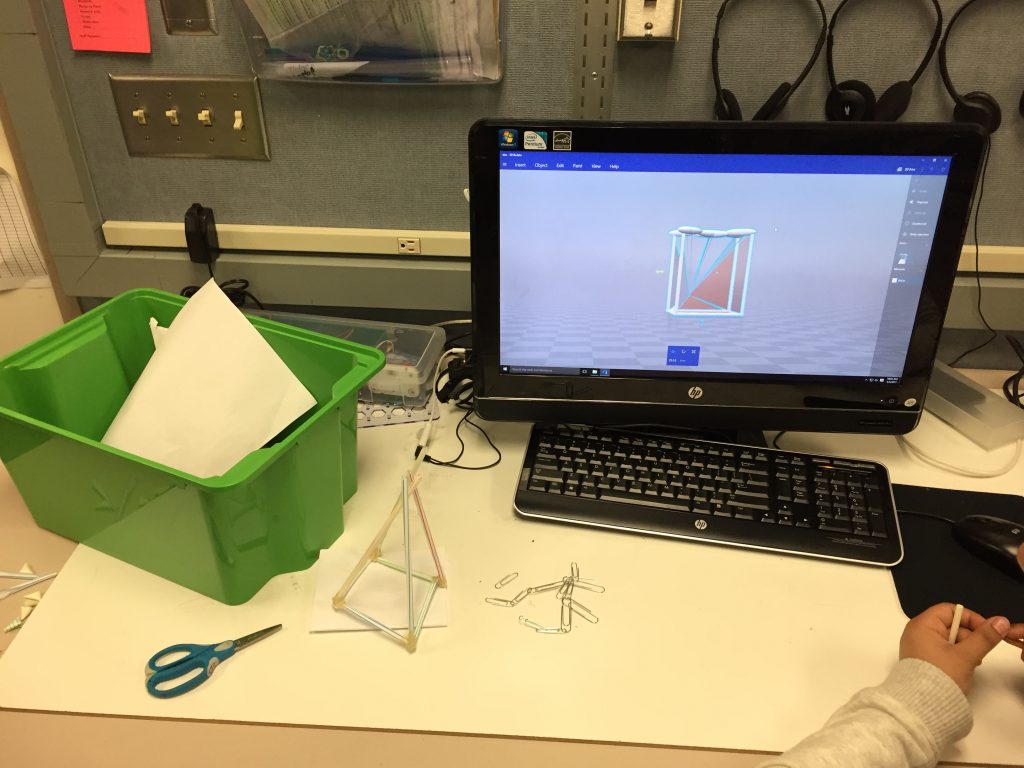
Source: Pivoting from In-Person to Virtual PD
Evidence: “When pivoting from in-person synchronous to online synchronous and asynchronous, I think the main lesson to learn is that there are very few direct substitutes or replacements. Most interactive online learning tools have their own advantages and disadvantages when compared with in-person learning. Most importantly, there are many ways in which these online tools can also be used to augment and improve in-person professional development. This is probably the best of both worlds where both tools can be used to supplement, complement, enhance, and amplify learning together. In this way, tools such as Google Office and Microsoft Office 365 can be used both in person and online. These traditional office tools now have several options for online collaboration and can make working together digitally more seamless when done both in-person and virtually as well as synchronous activities combined with asynchronous activities.”
Explanation: Understanding how to collaborate in an online digital learning environment helps educators understand how to model instructional design principles of this environment for others.

Source: Encoding Creative Communication
Evidence: “Polyup.com: Polyup is a drag and drop website that allows the user to program via math and what is essentially a math-based functional programming language. The platform gets around the challenge of doing this with order of operations by utilizing Reverse Polish Notation. Students can then use math to write basic programs, solve unique problems, and even code motion into objects. All of this is done via Polyup’s gamified computational thinking and mathematical coding online platform. There is also a real-world model for this approach to programming with math via the Wolfram Alpha search engine which uses a similar computing language and algorithm approach to Polyup. All of this bridges math, computer science, and a broader fundamental approach to applied computational thinking in a problem-based learning setting.”
Explanation: Polyup is one of many examples of an effective digital learning environment and modeling how to approach Polyup helps educators better understand the general instructional design principles that apply to these types of environments.

Source: Computational Thinking Across the Content Areas
Evidence: “These are two fairly generic examples of applying computational thinking to content areas beyond computer science and mathematics. Art and history are not traditionally associated with computational thinking and yet there is tremendous potential for applying this problem solving approach to problems that might exist in either subject area. With practice, components of computational thinking can be identified in all subject areas and then applied to relevant problems by students with proper support through thoughtfully designed lessons.”
Explanation: Modeling how to apply instructional design principles for technology based on foundational concepts, like Computational Thinking, across a variety of contexts is important if educators are to learn how to create effective digital learning environments.

Source: Design Process Quiddity
Evidence: “Stanford D-School: This is arguably the gold standard of a more universal design process approach. In other words, expanding beyond the common engineering design process model and looking at how design in and of itself can be a process model applied to solving a wide variety of problems. In particular, the idea of human-centered design with an emphasis on empathy make this particular approach powerful. I also like the idea of “Ideate” being a step as this really calls out the unique nature of brainstorming an idea into clear existence. The Stanford D-School design process model.”
Explanation: Stanford D-School’s approach to design is a powerful model of design principles that should be applied to instruction and carefully considered with regard to creating effective digital learning environments.
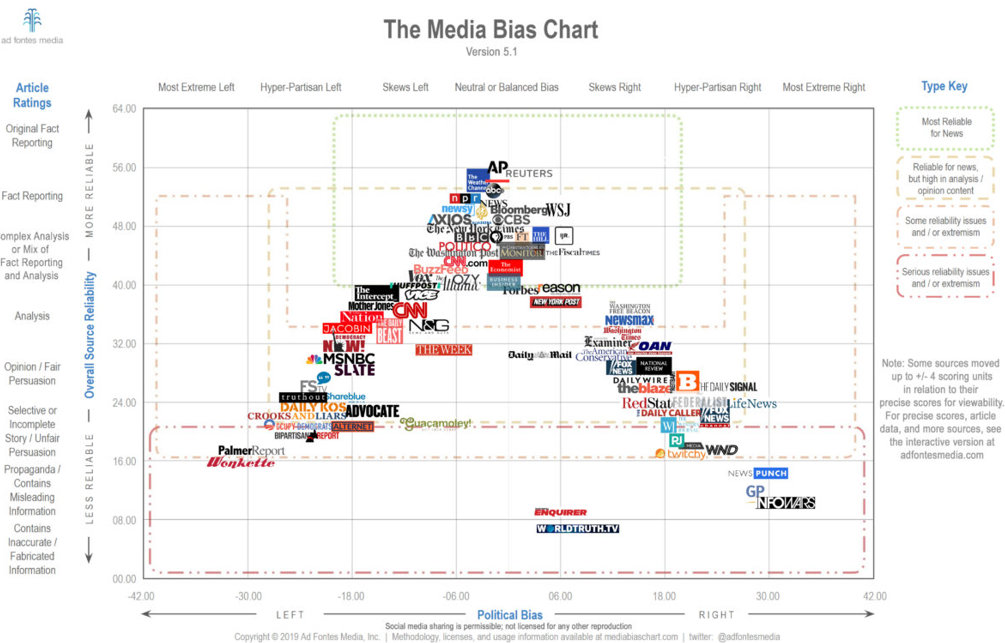
Source: Educating Students on Faux News in the “Fake News” Era
Evidence: “A standards-based approach drives much of what we do in education. At the end of the day, we should also teach content because it’s needed and the right thing to do in addition to being aligned with standards. When it comes to accurately researching factual information and recognizing misinformation, “all of the above” applies. The English Language Arts Common Core State Standards provide strong support through the Capacities of the literate individual: They demonstrate independence; They build strong content knowledge; They comprehend as well as critique; They value evidence; They use technology and digital media strategically and capably. We also find support in the Practices of the Next Generation Science Standards where the following is stated: Analyzing and Interpreting Data; Constructing explanations; Engaging in argument from evidence; Obtaining, evaluating, and communicating information. Determining accuracy of information is critical to these standards. Even the Common Core State Standards for Mathematical Practice speak to this need as students are tasked with being able to “Construct viable arguments and critique the reasoning of others.” In terms of the modern era, there is a deluge of information published online every day so it makes sense that we’d look to the ISTE technology standards as a starting point for teaching these skills in support of all standards. It just so happens that ISTE Standard 3 is well-suited to this task.”
Explanation: In the case, the modeling is with regard to identifying corresponding standard-based content across national standards that tie into and support the ISTE standards, standards-based instruction being a key instructional design principle critical to creating effective digital learning environments.
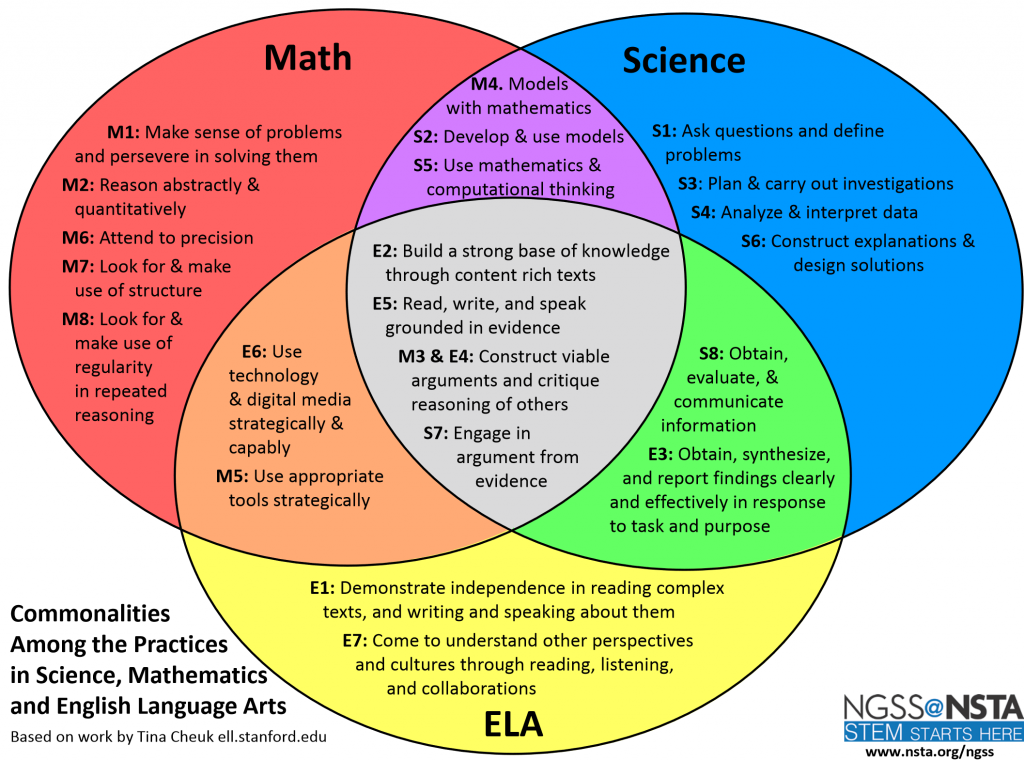
Source: Setting the Standard for Student Empowerment
Evidence 1 of 2: “The “Solving Real-World Community Problems” describes a classroom project where students respond to a recent snow storm by designing solutions to help make their neighbors’ lives easier during the next storm. Students are empowered to design real-world solutions to share with their community by thinking about the environmental and weather-related science, how technology can improve lives, utilizing the engineering emphasis of the design process to come up with new ideas, and the basic math required to diagram, measure, and build their solutions.”
Evidence 2 of 2: “By considering how standards overlap and disciplines connect then we can begin to think about answering the question around interdisciplinary integration in the NGSS and CCSS as related to the Empowered Learner standard.”
Explanation: Making learning relevant for students through pedagogical approaches such as Problem Based Learning and Standards Based Instruction provide a model of instructional design principles related to engaging students in their learning, whether in person or online utilizing an effective digital learning environment.
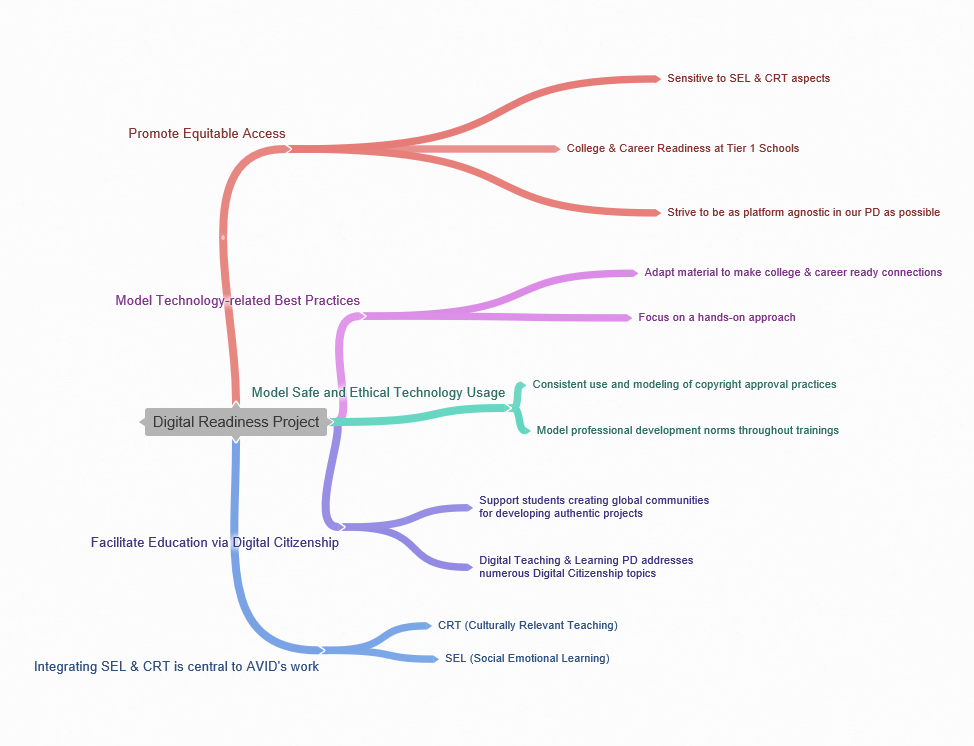
Source: Digital Readiness Project
Evidence: “AVID professional development seeks to model best practices in relation to educational technology. The overall emphasis is on appropriate pedagogical and andragogical practices. This ties into our instructional mantra of “Learning First, Tools Second”. There are too many things to list that go into this effort, however, making college and career readiness connections is always front and center to our work. As educators, we want students to be ready for yet-to-be imagined technologies and jobs. At AVID, this means developing professional development that empowers teachers to scaffold critical thinking processes for students, engage with hands-on learning that’s also minds-on, make abstract ideas as concrete as possible, and develop an overall sense of empathy for their students’ journey.”
Explanation: Modeling how to approach educational technology with appropriate instructional design principles is important and helps support educators in creation of effective digital learning environments.

4a Authentic, active learning experiences
